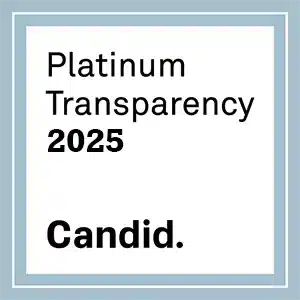Sourcing Tomorrow’s Technicians
Recently, our industry has stepped-up with a number of initiatives to inform the general public about the value and connection between STEM skills (Science, Technology, Engineering, and Mathematics) and future automotive career opportunities. The efforts have featured a multi-level approach, from educating students and parents about future workforce needs and benefits, to informing the STEM community about the wide variety of necessary backgrounds and opportunities, to raising awareness and involvement within our own industry.
One such effort is the Transportation Challenge, an initiative that deserves your attention. Not only does it have the support of a broad range of industry participants, its focus is on a student demographic industry employers have not traditionally considered — students who aren’t in an automotive program.
Connect, Interest and Encourage Students Earlier
The grassroots concept for the Transportation Challenge was created by the TechForce Foundation. For those who aren’t aware of TechForce, it’s a not-for-profit 501(c)(3) that believes solving the qualified technician shortage problem requires reaching out to students at a younger age. Its mission: To champion students to and through their education and into careers as professional technicians.
“We need to work at the grassroots level by offering tangible and relevant experiences to adolescents as they start to think about their possible future careers,” explained Greg Settle, director of National Initiatives for the TechForce Foundation. “The Transportation Challenge focuses on students being able to use their STEM skills to work on applicable, vehicle-related simulations. An early experience like this may prove to be the first step for students to pursue one of many rewarding automotive careers. I don’t know if every one of these students will, but I do know that after an experience like this, some are a step closer.”
Hands-on weekly sessions for the first Transportation Challenge — geared for middle school-aged students — ran September through December 2017, with a wrap-up and public demonstration last month in Phoenix, AZ. A second Challenge, to run February through May 2018, also in Phoenix, will use high school sophomores as its demographic. They’ll serve as pilots to critique, refine and perfect before the program is rolled out across the nation.
TechForce was assisted by a task force of volunteers from the ASE Training Manager’s Council (ATMC), who helped design five “automotive challenge scenarios” the students would later choose from and execute. Settle asked Tim Dwyer, an education specialist with ConsuLab Educatech Inc. to lead the task force. In addition, local educators, representatives from national associations and executives from industry employers shared constructive feedback and evaluations to help fine tune its delivery. Sponsors General Motors, Nissan North America, Advance Auto Parts, Snap-on Tools and Universal Technical Institute underwrote the costs of the Challenge.
“We feel we have to go back as early as middle school-aged students and put self-discovery at the level where they’ll hopefully spark an interest in a career in the transportation industry and help solve some of the quality technician shortage problems we’re having right now,” Dwyer explained.
 |
| The ATMC task force helped design five automotive challenges for the student teams to select from. One of the middle school teams (left) built and demonstrated a planetary gear set. Another team (right) was tasked with engineering a two-axle vehicle that would protect an egg in the event of a frontal impact crash. (All images — Tim Dwyer) |
A Program Built for Discovery
“To meet these challenges, these young people transformed from being a group of individuals into team members who relied on one another,” Dwyer noted. “The Transportation Challenge students worked in three teams to learn real-life tasks. These lessons ranged from structural engineering and material compatibility to the chemistry of atmospheric air and how it affects an engine, topics usually unavailable in a traditional classroom.”
Once part of a Transportation Challenge event, student teams choose one challenge out of the five created by the ATMC task force. One team selected designing a crash test, which required it to build a two-axle vehicle that would protect an egg in the event of a frontal impact. The second team chose to engineer a working turbocharger for the compression of intake air into an internal combustion engine. The final team was challenged with building a planetary gear set utilizing a fixed speed electric motor that would move a fixed weight a certain distance.
Each of the teams then used and developed their STEM skills by spending two hours each week at CREATE U facility at the Arizona Science Center, where they had access to CNC machines, laser cutters, 3D printers and an entire woodworking shop to bring their transportation prototype to life. Industry experts served as coaches and mentors to provide real-world insight and training to the students. The Challenge concluded with students demonstrating their projects to their parents and a number of special guests from the education community and the transportation industry.
“Every child has a path and for some, university may not be the best fit,” observed Chevy Humphrey, the CEO of the Arizona Science Center. “This [Transportation Challenge] program gives youth opportunities to invent, design and fabricate materials for actual use. It also opens their eyes to alternate ways to become successful by leveraging their talents and passion.”
A Call to Action
“Understand that the whole founding point of this project was to establish an event that could be replicated and offered in other sites,” Dwyer noted. “The Technology Challenge events in Arizona were prototypes to introduce middle school through high school-aged learners to working with their hands in transportation situations. We had a lot of successes, but also encountered some problems that need to be resolved.”
“Here’s one bottleneck that concerns me,” he continued. “The ATMC task force trainers — who volunteered to develop the challenges the young students would face — typically teach older audiences comprised of working technicians, other shop staff and owners. We had some problems providing input and framing challenges at a level and context appropriate to younger students.”
“This problem could be offset by involving experts from our industry who work with young students every day, such as instructors from the North American Council of Automotive Teachers (NACAT). “I see a real opportunity for NACAT members to help this initiative. Its members are virtually everywhere, a resource TechForce needs when it visits different locales. They’re also more attuned to teaching middle school, high school, vocational school and college aged students. And they’re ideally suited to developing challenges and serving as mentors for a couple of hours per week working with and challenging these young people to work with their hands. It’s a natural fit: It’s what they do, and it’s in their DNA.”
Constructive Feedback Provides Traction
“Every child has a path and for some, university isn’t the best fit,” shared Chevy Humphrey, the CEO of the Arizona Science Center. “This [Transportation Challenge] program gives youth opportunities to invent, design, and fabricate materials for actual use. It also opens their eyes to alternate ways to become successful by leveraging their talents and passion.”
“Most young students, unfortunately, are relegated to the classroom,” noted Michael Romano, president of Universal Technical Institute’s campus in Avondale, AZ. “They don’t always have the opportunity to be exposed to a greater variety of experiences. Bringing them to a learning facility where they can use their hands to experiment and try different things will help them be better workers, better producers and have a more well-rounded education as a whole. And some of them may choose automotive as a pursuit.”
“There’s power in working as a team toward a common cause,” observed Eric Rogers, one of the Estrella Middle School teachers involved in the first Challenge. “Problem solving, applying divergent thinking and finding multiple solutions are key learning points for the students. In addition, collaborating and sharing can draw a better contribution from another team member that improves upon the original idea.”
At the end of January 2018, in between the two pilot events, the TechForce Foundation invited thirty leaders from national associations and upper-level industry executives to its inaugural annual summit of the FutureTech Success National Leadership Cabinet. “We’re so grateful to have the support, engagement and enthusiasm of leaders throughout the industry,” said Jennifer Maher, CEO and Executive Director of TechForce. “No one entity can fix the qualified technician shortage problem. We all must row in the same direction.”
The Summit group explored ways to implement and activate the campaign within their own companies and associations, and brainstorming collaborative ideas around which the whole industry can unite. It also unveiled its revamped website, which includes the FutureTech Resource Hub (a one-stop portal through which parents and future technicians can find after-school programs, technical schools, scholarships and other resources), as well as an Industry Hub (which enables industry recruiters, managers, working technicians and educators to connect with future technicians).
If you’re a shop owner, working technician or instructor up for the chance to make a difference, please contact Jennifer Maher at the TechForce Foundation
_________________________________________________________
Original article published on Motor Magazine’s website
Contributed by Bob Chabot







